Basics

Red pandas (Ailurus fulgens), also known as lesser pandas, fire foxes, or natively pajā / paũjā, are an endangered species of mammal that are the sole living representative in the family Ailuridae, native to the eastern Himalayas (spreading through Nepal, Tibet, India, Bhutan, and Myanmar) and southwest China. Less than 10,000 red pandas exist in the wild.
 The placement of Ailuridae on the evolutionary tree is hotly debated and has changed several times. However, after recent genetic studies, their placement has been more pinpointed.
The placement of Ailuridae on the evolutionary tree is hotly debated and has changed several times. However, after recent genetic studies, their placement has been more pinpointed.
Despite their name, red pandas are not bears, and despite appearance, are only vaguely related to raccoons, sharing a superfamily with them. Ailuridae is its own unique family, belonging to the superfamily Musteloidae (of which later breaks down into skunks, raccoons, and mustelids).
Red pandas are actually more closely related to seals than they are to bears.
Red pandas inhabit mountainous forests with heavy bamboo cover near water sources, eating bamboo shoots and leaves, some fruits, and some flowers.
Red pandas are broken into two subspecies- Himalayan/Western (A. f. fulgens) and Chinese/Eastern/Styan's (A. f. styani).



 The placement of Ailuridae on the evolutionary tree is hotly debated and has changed several times. However, after recent genetic studies, their placement has been more pinpointed.
The placement of Ailuridae on the evolutionary tree is hotly debated and has changed several times. However, after recent genetic studies, their placement has been more pinpointed.Despite their name, red pandas are not bears, and despite appearance, are only vaguely related to raccoons, sharing a superfamily with them. Ailuridae is its own unique family, belonging to the superfamily Musteloidae (of which later breaks down into skunks, raccoons, and mustelids).
Red pandas are actually more closely related to seals than they are to bears.
Red pandas inhabit mountainous forests with heavy bamboo cover near water sources, eating bamboo shoots and leaves, some fruits, and some flowers.
Red pandas are broken into two subspecies- Himalayan/Western (A. f. fulgens) and Chinese/Eastern/Styan's (A. f. styani).



Subspecies

 A new and highly important discovery of the red panda is its split into two distinct subspecies. Himalayan and Chinese red pandas were separated ~250,000 years ago, probably by a glaciation event. The researchers to discover this fact suggested Himalayan and Chinese red pandas should be treated as separate species, but until further evidence comes to light, the two are treated as subspecies.
A new and highly important discovery of the red panda is its split into two distinct subspecies. Himalayan and Chinese red pandas were separated ~250,000 years ago, probably by a glaciation event. The researchers to discover this fact suggested Himalayan and Chinese red pandas should be treated as separate species, but until further evidence comes to light, the two are treated as subspecies.Due to this not having been known until 2020, many conservation programs and zoos had mixed Himalayan and Chinese red pandas, resulting in some hybridization. Most now attempt to keep the subspecies separate, only keeping one subspecies, to better aid their conservation.
The Siang River (or Brahmaputra River) divides the two subspecies.
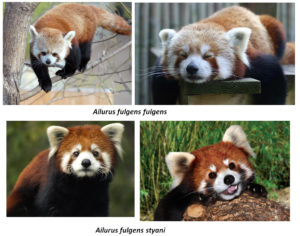
Himalayan Red Panda

The Himalayan red panda (Ailurus fulgens fulgens) has a straighter profile, lighter coat, and usually whiter head. Usually they are smaller.
Chinese Red Panda

The Chinese red panda (Ailurus fulgens styani or Ailurus fulgens refulgens) has a curved forehead, darker and more vibrant coat, and more contrast in their tail.
Why (Not) Hybridize?
Hybridization comes with pros and cons. While its usefulness as a tool for conservation has been noted, especially in cases of reintroduction, for many red pandas outside of their native countries that's simply not going to be the case.The red panda subspecies have been genetically distinct and separated for 250,000 years. Hybridization could jeopardize these distinct populations, reintroducing one to the other, compromising genetic integrity and health of descendants. Despeciation is a real concern- the loss of a distinct species/subspecies due to hybridization.
 Hybridization has, in some cases, aided in extinctions, especially in species with very limited ranges.
Hybridization has, in some cases, aided in extinctions, especially in species with very limited ranges.Another reason hybridization isn't really necessary and should be avoided within red pandas is, unlike many other endangered species, they have a high level of genetic diversity. Low genetic diversity often requires that conservationists push for hybridization to increase the size of the gene pool, but it is not a concern for the red panda, whose primary reasons for being endangered are habitat loss and poaching.
Conservation

The population of the red panda is on a decrease, and they were classified as Endangered in 2008.
The major issues they face are deforestation, human population growth, and poaching.
The red panda is protected in all countries in its range, and 37 protected areas keep them safe.
A major source of conservation are ongoing zoo breeding programs, and it is of high priority for their conservation. It's hard to know how many are in zoos total, but in 2019, there were around 400 in European zoos alone. Knoxville Zoo (TN, USA) has bred the most cubs at over 110.
May be inaccurate, as many zoos don't list the subspecies they keep or may not report to the lineage project.
 Smithsonian's National Zoo: Himalayan
Smithsonian's National Zoo: Himalayan
Zoo Atlanta: Himalayan
Cincinnati Zoo: Chinese
Philadelphia Zoo: Himalayan
Birmingham Zoo: Himalayan
Houston Zoo: Chinese
Knoxville Zoo: Himalayan
San Franciso Zoo: Himalayan
Red River Zoo: Chinese
Franklin Park Zoo: Both
Zoo Montana: Both
Northeastern Wisconsin Zoo: Chinese
Bronx Zoo: Himalayan
Wild Zoo of Saint-Félicien: Chinese
Oregon Zoo: Chinese
The major issues they face are deforestation, human population growth, and poaching.
The red panda is protected in all countries in its range, and 37 protected areas keep them safe.
A major source of conservation are ongoing zoo breeding programs, and it is of high priority for their conservation. It's hard to know how many are in zoos total, but in 2019, there were around 400 in European zoos alone. Knoxville Zoo (TN, USA) has bred the most cubs at over 110.
Subspecies List
What zoos keep what subspecies?May be inaccurate, as many zoos don't list the subspecies they keep or may not report to the lineage project.
 Smithsonian's National Zoo: Himalayan
Smithsonian's National Zoo: HimalayanZoo Atlanta: Himalayan
Cincinnati Zoo: Chinese
Philadelphia Zoo: Himalayan
Birmingham Zoo: Himalayan
Houston Zoo: Chinese
Knoxville Zoo: Himalayan
San Franciso Zoo: Himalayan
Red River Zoo: Chinese
Franklin Park Zoo: Both
Zoo Montana: Both
Northeastern Wisconsin Zoo: Chinese
Bronx Zoo: Himalayan
Wild Zoo of Saint-Félicien: Chinese
Oregon Zoo: Chinese
Why So Many Himalayan?
Chinese red pandas are reportedly rarer in the wild and harder to breed than Himalayan red pandas. Only 18 zoos house Chinese red pandas, with even fewer housing both subspecies.Ailuridae
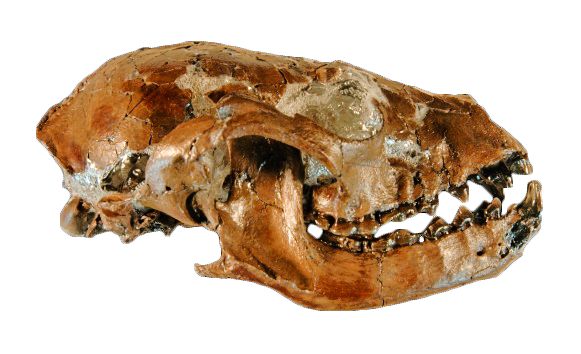
The red panda is the only living member of Ailuridae, but it has extinct, prehistoric siblings that mostly date to the Miocene. However, ailurids first appeared in the Late Oligocene.
They are the first ailurids, appearing in Europe from the Late Oligocene to the Middle Miocene. Some fossils were also found in North America.
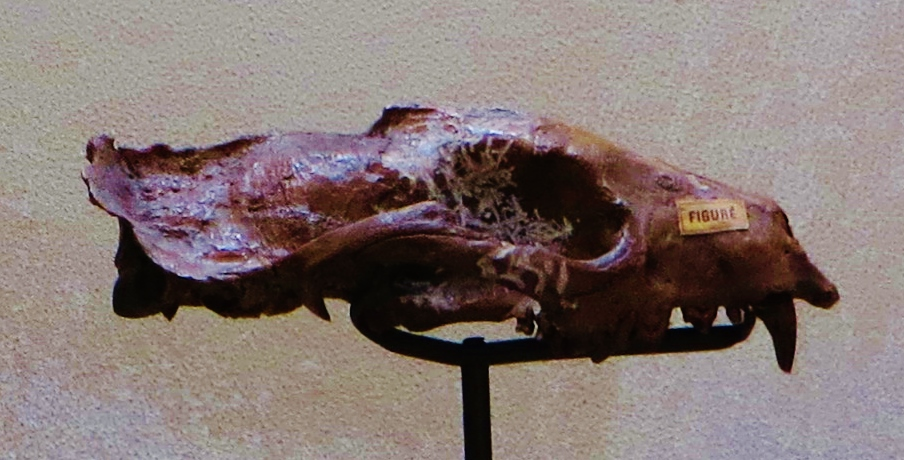
A. antiqua skull
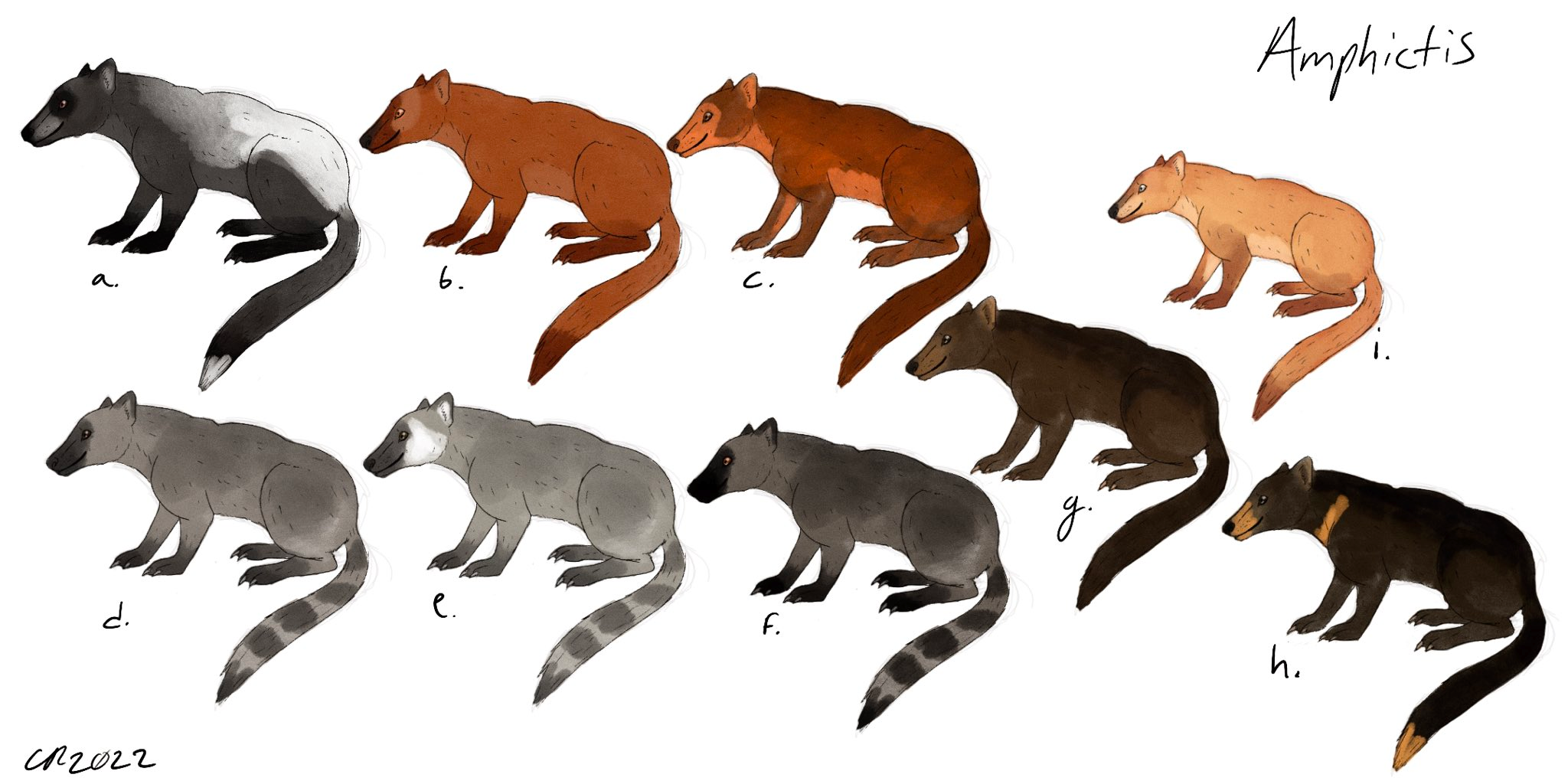
Amphictis species by TangentTanager
Simocyoninae
Amphictinae
Amphictis
Amphictis is a genus of 9 known species. Its type species is Amphictis antiqua. They were first discovered in 1842 and described in 1853.They are the first ailurids, appearing in Europe from the Late Oligocene to the Middle Miocene. Some fossils were also found in North America.

A. antiqua skull

Amphictis species by TangentTanager
Simocyoninae
Simocyon
Simocyon is the one of the most notable of the extinct Ailuridae. Its type species is Simocyon batalleri. They were first discovered in 1832 and described in 1858.
They were carnivores who probably crushed bone in their jaws, much like hyenas, and were the size of mountain lions. They lived from the Late Miocene to Early Pliocene with fossils found in Europe, Asia, and rarely North America.
Like modern red pandas, they have a false thumb and primarily climbed trees. They have 4 known species.
The skull pictured at the top of this post is the skull of S. batalleri.

S. batalleri

S. batalleri skull and recreation
Actiocyon
Actiocyon were first considered to be part of the raccoon family, but later reclassified as ailurids. Its type species is Actiocyon leardi. They were first discovered and described in 1947.
They lived in North America during the Middle Miocene and have 2 known species.
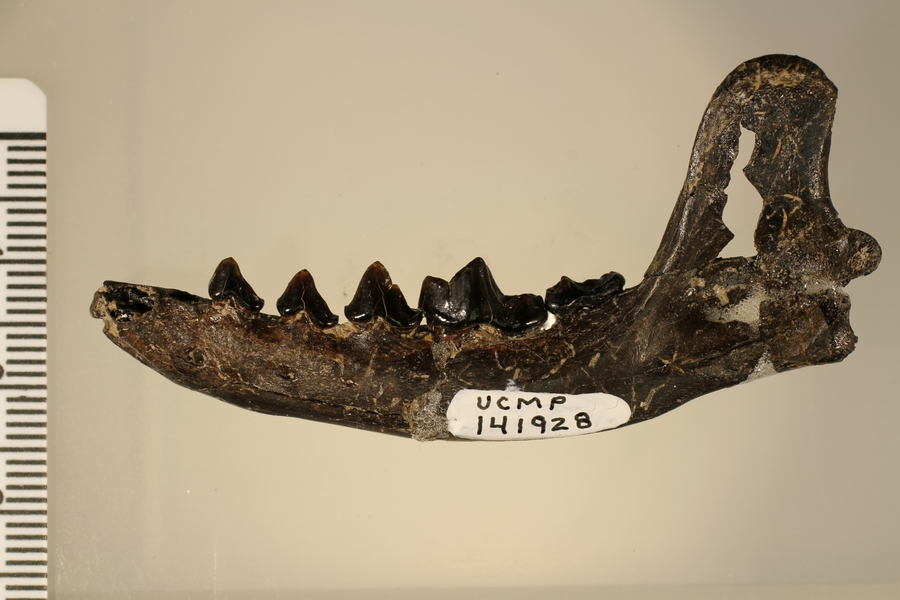
A. parverratis jaw
Alopecocyon
Alopecocyon is a genus of 2 known species. Its type species is Alopecocyon goeriachensis. They were first discovered in 1884 and described in 1940.
Knowledge of them is based on fossil fragments, largely of teeth. They lived during the Middle to Late Miocene in Europe and Asia.
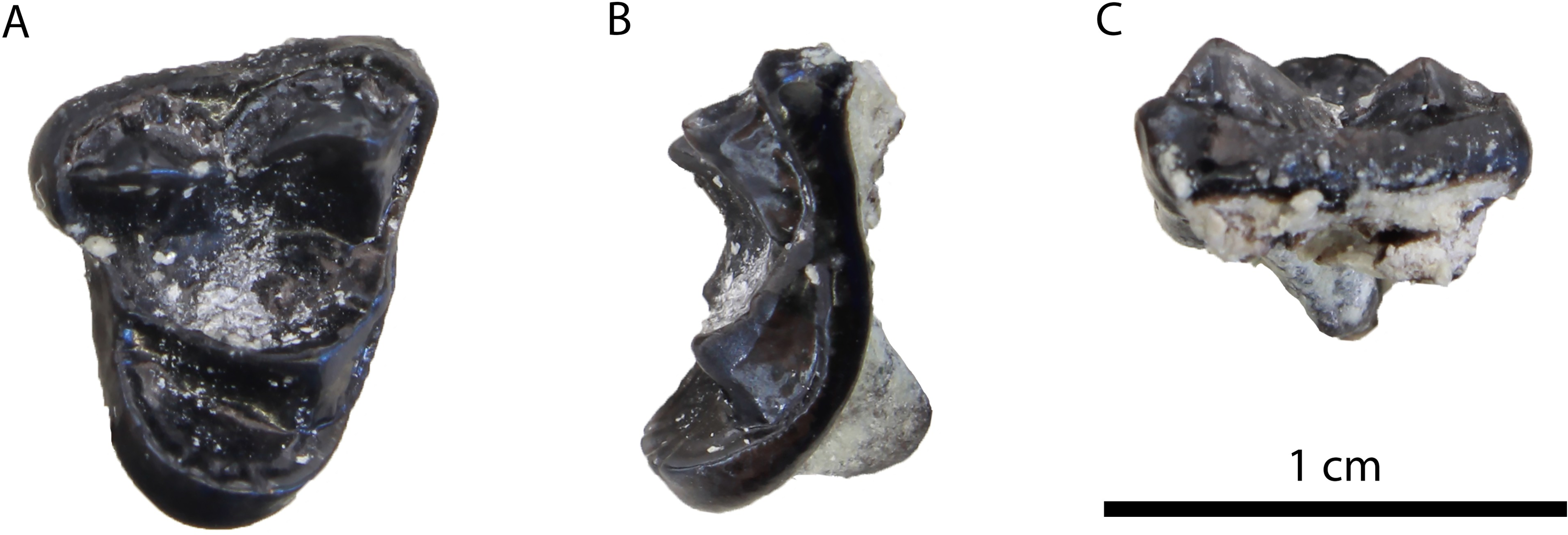
A. goeriachensis molar
Protursus
Protursus is a genus of 1 species, known only by a single tooth, originally thought to be part of the bear family. Its type and only species is Protursus simpsoni. They were first discovered and described in 1976.
The single sample of P. simpsoni dates to the Late Miocene and was found in Spain.
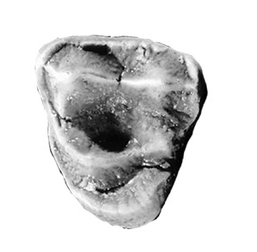
P. simpsoni tooth
Ailurinae
Ailurinae is interesting, as it contains two tribes (Pristinailurini and Ailurini- modern red pandas are part of Ailurini) and a genus, unlike the other subfamilies which only consist of genera.
Unlike their siblings, Ailurinae are the only "true" red pandas, as they are considered more advanced than the other subfamilies, and unlike their primarily carnivorous siblings, were more omnivorous or herbivorous.
Magerictis
Magerictis is a genus of 1 species, also only firt known by a single tooth, till more samples were later found. Its type species is Magerictis imperialenis, also known as Magerictis imperialis. They were first discovered and described in 1997.
They are thought to be similar in size to the modern red panda and they are the first "true" red panda. Its first sample dates back to the Early Miocene and was found in Spain.
Pristinailurus
 Pristinailurus is one of the most notable of the extinct Ailuridae and is widely documented with multiple full skeletons. It is a genus of 1 species, with fossils found widely in the Gray Fossil Site at Gray, Tennessee, USA. Its type and only species is Pristinailurus bristoli. They were first discovered and described in 2004.
Pristinailurus is one of the most notable of the extinct Ailuridae and is widely documented with multiple full skeletons. It is a genus of 1 species, with fossils found widely in the Gray Fossil Site at Gray, Tennessee, USA. Its type and only species is Pristinailurus bristoli. They were first discovered and described in 2004.
They range from the Miocene to Pliocene. Males were twice the size of females. Though they were bigger than red pandas, they had a weaker bite.
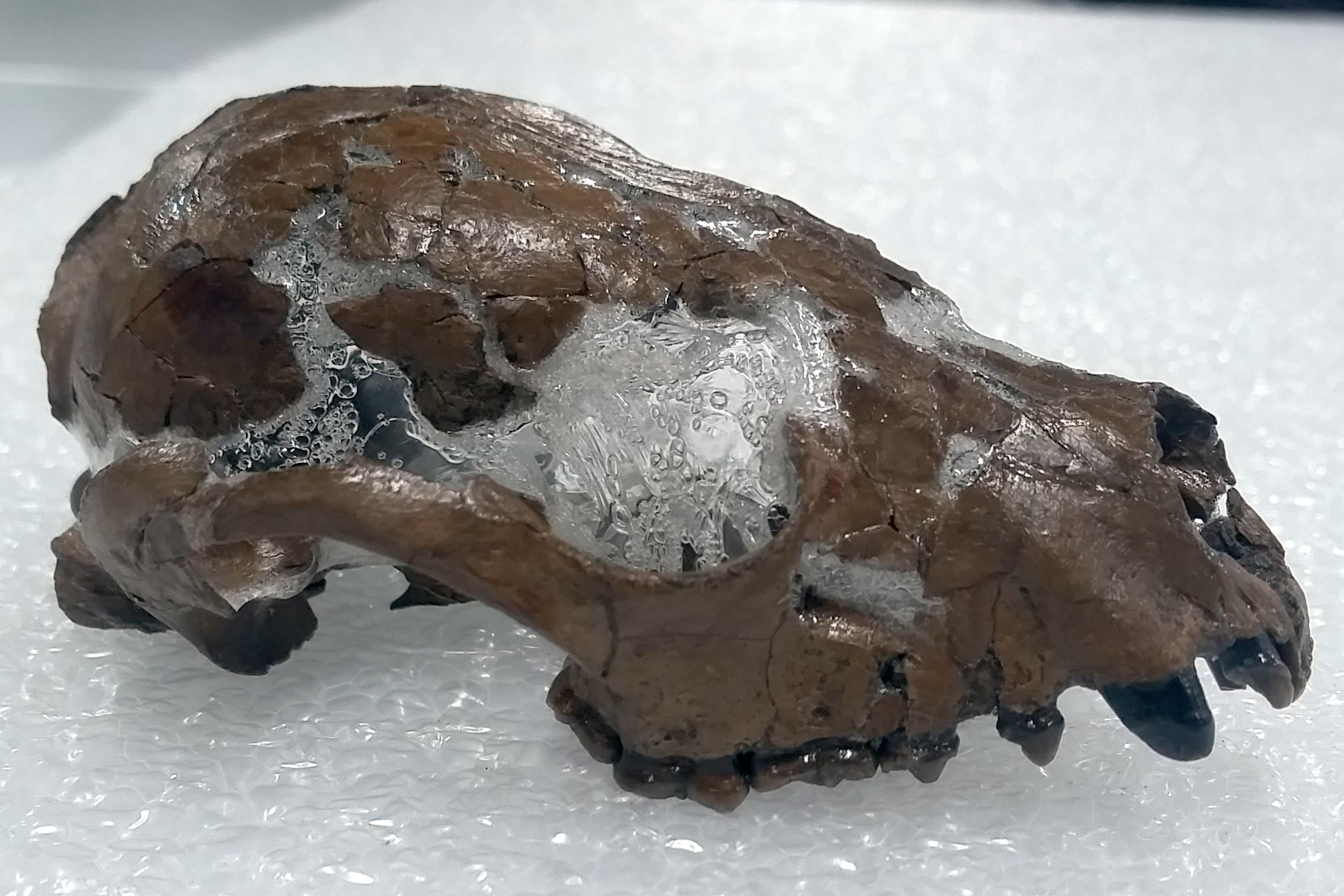
P. bristoli skull

Size comparison between an adult red panda (white), an older female P. bristoli (pink), and a younger male P. bristoli (blue)

P. bristoli
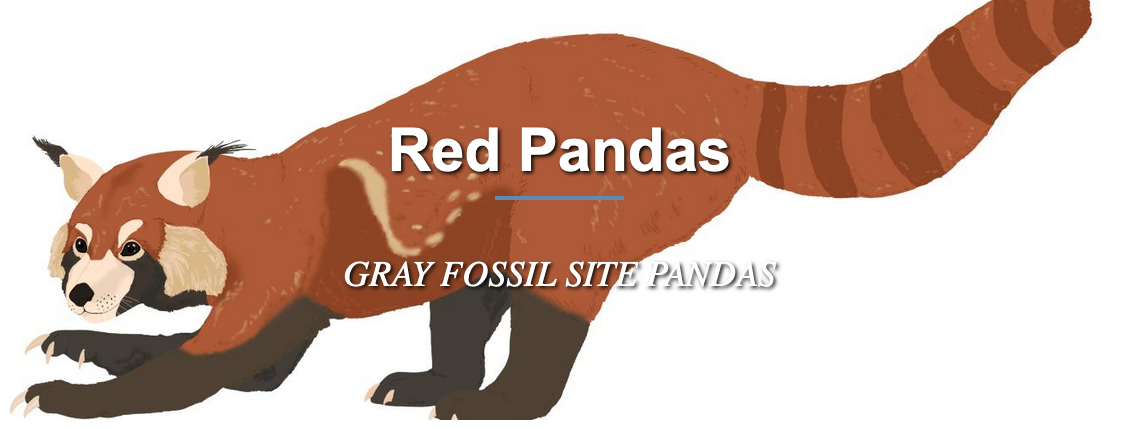
P. bristoli on the Gray Fossil Site website
Parailurus
Parailurus is a genus of 3 species, and unlike the other ailurids and similarly to red pandas, primarily ate leaves. Its type species is Parailurus anglicus, also known as Parailurus hungaricus. They were first discovered in 1888 and described in 1899.
They lived during the Early to Late Pliocene and lived in Europe, North America, and Japan.
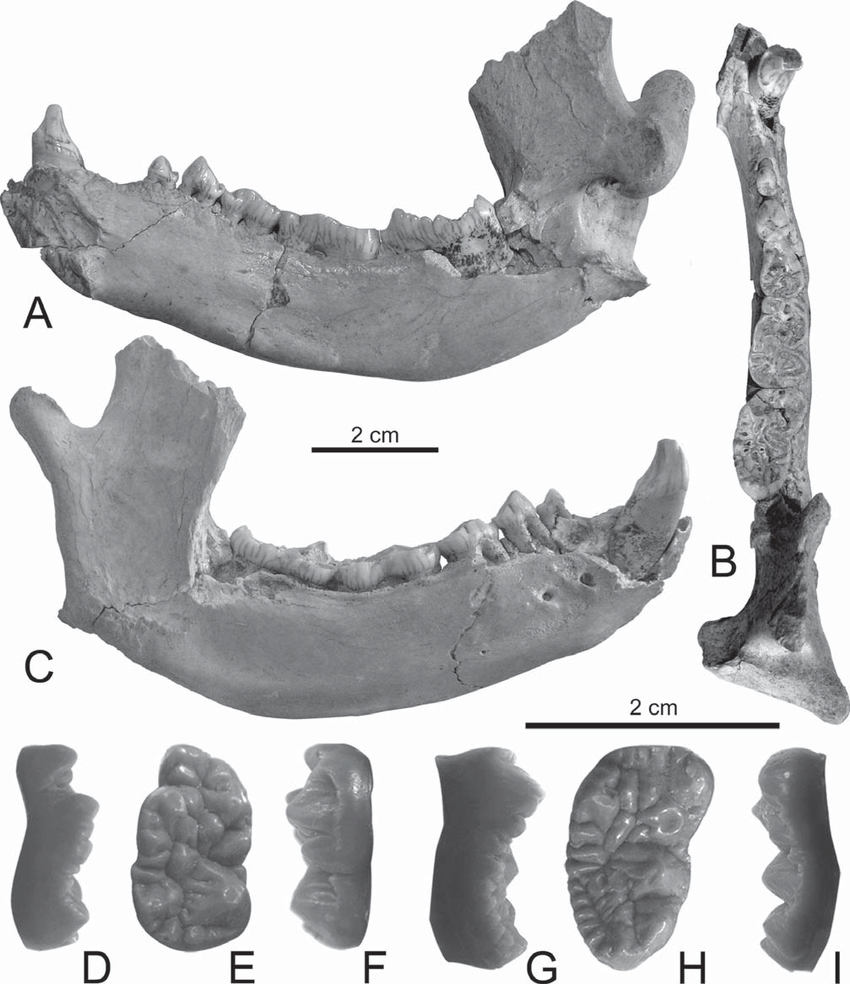
P. baikalicus jaw and teeth
Ailurus
You are here! This is the genus of the red pandas.
They have existed in Asia since the Pleistocene (the epoch after the Pilocene), and the subspecies were most likely separated by the glaciations of the Tibetan Plateau at this time.
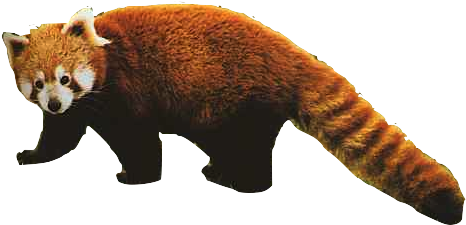
Modern red pandas still hold a lot of their extinct cousins' traits. They may be (mostly) herbivorous, but their teeth are still notably carnivorous, with prominent canines.
When startled, red pandas will stand on their hind legs and raise their paws into the air to appear bigger.
To us, this is a rather cute display, but imagine if it was one of their much larger, more carnivorous cousins. Now that's a lot scarier.

Simocyon
Simocyon is the one of the most notable of the extinct Ailuridae. Its type species is Simocyon batalleri. They were first discovered in 1832 and described in 1858.They were carnivores who probably crushed bone in their jaws, much like hyenas, and were the size of mountain lions. They lived from the Late Miocene to Early Pliocene with fossils found in Europe, Asia, and rarely North America.
Like modern red pandas, they have a false thumb and primarily climbed trees. They have 4 known species.
The skull pictured at the top of this post is the skull of S. batalleri.

S. batalleri

S. batalleri skull and recreation
Actiocyon
Actiocyon were first considered to be part of the raccoon family, but later reclassified as ailurids. Its type species is Actiocyon leardi. They were first discovered and described in 1947.They lived in North America during the Middle Miocene and have 2 known species.

A. parverratis jaw
Alopecocyon
Alopecocyon is a genus of 2 known species. Its type species is Alopecocyon goeriachensis. They were first discovered in 1884 and described in 1940.Knowledge of them is based on fossil fragments, largely of teeth. They lived during the Middle to Late Miocene in Europe and Asia.

A. goeriachensis molar
Protursus
Protursus is a genus of 1 species, known only by a single tooth, originally thought to be part of the bear family. Its type and only species is Protursus simpsoni. They were first discovered and described in 1976.The single sample of P. simpsoni dates to the Late Miocene and was found in Spain.

P. simpsoni tooth
Ailurinae
Ailurinae is interesting, as it contains two tribes (Pristinailurini and Ailurini- modern red pandas are part of Ailurini) and a genus, unlike the other subfamilies which only consist of genera.Unlike their siblings, Ailurinae are the only "true" red pandas, as they are considered more advanced than the other subfamilies, and unlike their primarily carnivorous siblings, were more omnivorous or herbivorous.
Magerictis
Magerictis is a genus of 1 species, also only firt known by a single tooth, till more samples were later found. Its type species is Magerictis imperialenis, also known as Magerictis imperialis. They were first discovered and described in 1997.They are thought to be similar in size to the modern red panda and they are the first "true" red panda. Its first sample dates back to the Early Miocene and was found in Spain.
Pristinailurus
 Pristinailurus is one of the most notable of the extinct Ailuridae and is widely documented with multiple full skeletons. It is a genus of 1 species, with fossils found widely in the Gray Fossil Site at Gray, Tennessee, USA. Its type and only species is Pristinailurus bristoli. They were first discovered and described in 2004.
Pristinailurus is one of the most notable of the extinct Ailuridae and is widely documented with multiple full skeletons. It is a genus of 1 species, with fossils found widely in the Gray Fossil Site at Gray, Tennessee, USA. Its type and only species is Pristinailurus bristoli. They were first discovered and described in 2004.They range from the Miocene to Pliocene. Males were twice the size of females. Though they were bigger than red pandas, they had a weaker bite.

P. bristoli skull

Size comparison between an adult red panda (white), an older female P. bristoli (pink), and a younger male P. bristoli (blue)

P. bristoli

P. bristoli on the Gray Fossil Site website
Parailurus
Parailurus is a genus of 3 species, and unlike the other ailurids and similarly to red pandas, primarily ate leaves. Its type species is Parailurus anglicus, also known as Parailurus hungaricus. They were first discovered in 1888 and described in 1899.They lived during the Early to Late Pliocene and lived in Europe, North America, and Japan.

P. baikalicus jaw and teeth
Ailurus
You are here! This is the genus of the red pandas.They have existed in Asia since the Pleistocene (the epoch after the Pilocene), and the subspecies were most likely separated by the glaciations of the Tibetan Plateau at this time.

Modern red pandas still hold a lot of their extinct cousins' traits. They may be (mostly) herbivorous, but their teeth are still notably carnivorous, with prominent canines.
When startled, red pandas will stand on their hind legs and raise their paws into the air to appear bigger.
To us, this is a rather cute display, but imagine if it was one of their much larger, more carnivorous cousins. Now that's a lot scarier.

What Does the (Fire) Fox Say?

Red pandas are nicknamed "wah"s online for the squeaky noises they make that sound to some like they're going "wah".
Red pandas make high-pitched squeaks and chitters that can sound similar to birds or otters, the whining of a dog, or squeaky toy sounds. They also make short, rough grunt sounds that can sometimes sound like barks. They also hiss!
They are normally rather quiet, so hearing their squeaks are a real treat!
Chinese(?) red pandas playfighting and vocalizing
Unknown zoo probably in Singapore
Chinese red panda cub Pabu climbing around and exploring while occasionally chittering
Oregon Zoo
Chinese red panda Malina pacing around in the snow while squeaking
Wild Zoo of Saint-Félicien
TW: LOUD
Compilation of various noises, Chinese
Red River Zoo
Chinese(?) red panda squeaking and hissing while standing
Unknown zoo probably in Hong Kong
Red pandas make high-pitched squeaks and chitters that can sound similar to birds or otters, the whining of a dog, or squeaky toy sounds. They also make short, rough grunt sounds that can sometimes sound like barks. They also hiss!
They are normally rather quiet, so hearing their squeaks are a real treat!
Chinese(?) red pandas playfighting and vocalizing
Unknown zoo probably in Singapore
Chinese red panda cub Pabu climbing around and exploring while occasionally chittering
Oregon Zoo
Chinese red panda Malina pacing around in the snow while squeaking
Wild Zoo of Saint-Félicien
TW: LOUD
Compilation of various noises, Chinese
Red River Zoo
Chinese(?) red panda squeaking and hissing while standing
Unknown zoo probably in Hong Kong

